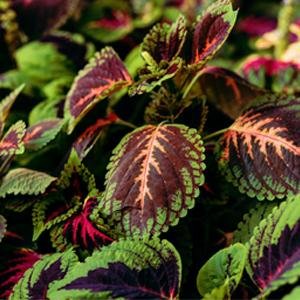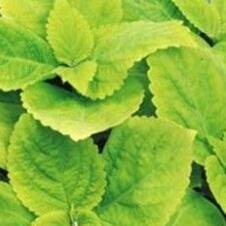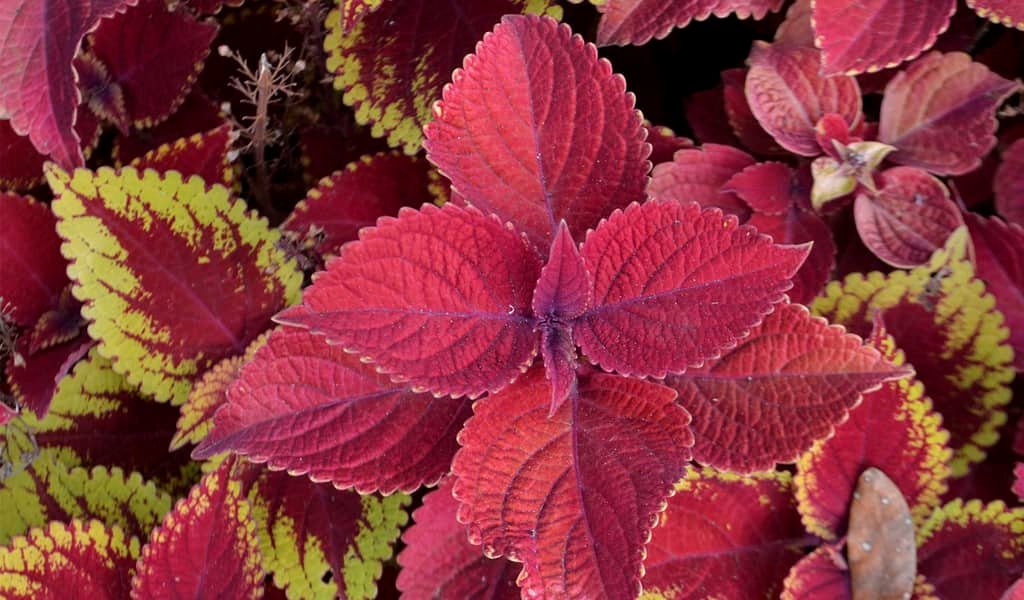Coleus is an outdoor plant, belonging to the genus of perennial herbs or shrubs. The colourful leaves of this plant are green, red, orange, pink, purple and yellow-blue in shape and size with small, different patterns on the edge of the leaf. This plant is mostly found in tropical and subtropical regions of Southeast Asia, Malaysia, Afro-Eurasia. The beautifully patterned leaves of this plant attract people towards it.
Coleus scutellarioides is popular as a garden plant because of its beautiful and bright foliage. Plectranthus, Solenostemon and Coleus these three genera differ by a few differences. Common names for coleus include flybush, spurflower, hallwort, and hedgehog flower.
Other species grown for food include Coleus maculosus subsp, esculentus and Coleus rotandifolius. It is planted outdoors in the garden or nursery in early spring. This plant spreads quickly and grows to full size during the season.
History
Coleus is native to the tropical regions of India, Africa, Southeast Asia and Australia, with the largest number of plants in Sri Lanka and Indonesia. Coleus was brought to America and Europe by traders and botanists. While some people believe that coleus was brought to Europe in the early 17th century.
Dutch botanist Carl Ludwig Blum, who lived on an Indonesian island collecting plants, named and introduced coleus to Europe about 200 years ago. Coleus was considered a centerpiece in the garden until the middle of the 20th century. Hybrid plants of coleus were produced in 1990.
Coleus Plant Overview
- Botanical Name: Plectranthus scutellarioides
- Common Name: Coelus
- Family: Lamiaceae
- Plant Type: Herbaceous perennial (usually grown as an annual)
- Bloom Time: Seasonal
- Soil Type: Rich, moist, loose soil, well-drained
- Soil pH: Slightly acidic to neutral (6.0 to 7.0)
- Sun Exposure: Part shade to full shade
- Height: 1 to 3.5 feet
- Width: 1 to 3 feet
- Flowers Color: Blue to white
- Hardiness Zones: 10-11 (USDA)
- Native Area: Asia
- Toxicity: Toxic to animals
Types of Coleus Plant
Rustic Orange
- Height: 18-24 inches
- Spread: 15-18 inches
- Color: Orange
Rustic Orange is famous for its vibrant orange foliage. The leaves of this plant are cultivated to give it a spherical shape. The leaves of this plant include dark orange along with red spots.
Fishnet Stockings

- Height: 24-36 inches
- Spread: 12-16 inches
- Color: Lime green and burgundy
Fishnet stockings usually have brown leaves with green undertones. This plant gives a beautiful and attractive look. Give this plant partial sunlight and water regularly during the season.
Limelight

- Height: 12-16 inches
- Spread: 12-15 inches
- Color: Chartreuse
Limelight is a plant placed in the Giant Exhibition category. This plant has green leaves, which makes it the first choice for the garden. The shape of this plant is spherical.
Super-Fine Rainbow Festive Dance
- Height: 12-15 inches

- Spread: 10-14 inches
- Color: Chocolate brown
This beautiful coleus is richer in diversity than other plants. This plant has chocolate-brown or bronze leaves with an orange center and green edges. You can grow this plant in the garden or in a container.
How to Grow Coleus Plant
Coleus plants are very easy to grow. Its seeds are sown about eight to ten weeks before spring frost. They need fertile and well-drained soil.
You can grow this plant in partial shade to bring out its beautifully coloured leaves. This plant does best in moist soil. Keep coleus indoors in the fall and prune the plants in the summer to allow new plants to grow from them in the spring.
Coleus Plant Care
Coleus plants require more water than other plants. Give this plant a liquid fertilizer before spring to help it grow faster. Spike flowers of coleus are seen during summer.
This plant does not like too much winter. These plants are grown in containers, so they can be brought indoors during the winter. Move them to the garden when temperatures are above 60 degrees Fahrenheit.
Light
Coleus prefers part sun or full shade. Apart from this there is also variation in light for different species of coleus. Partial shade is also necessary for seed germination. Excessive sun can burn the leaves or discolour the leaves in most varieties.
Coleus do best in morning light and evening light. Indoors, these plants receive sunlight during the hot summer months but require filtered sunlight during the winter.
Soil
Coleus prefers rich, loose, consistently moist, well-drained soil. Amend the soil with compost or other organic material, such as perlite, before planting. Provide a good-quality potting mix for potted plants to encourage plant growth.
Choose a container with drainage holes for this plant. Choose a soil with a pH of 6.0 to 7.0 and an acidic quality. Use drainage to keep the soil constantly wet, which will prevent root rot.
Water
Coleus plants grow best in consistently moist but not wet soil. If the soil remains dry for a long time, the growth of the plant slows down, and the edges of the leaves start to turn brown.
Before giving water, make sure that it is given only when the upper part of the soil is dry. Mulch helps the soil retain moisture for longer.
Fertilizer
If you have rich soil, you don’t need to fertilize coleus plants, but if your soil is poor, fertilize it. Your plant’s leaves will have the best colour if they are fertilized with the potion fertilizer that this plant needs.
Temperature and Humidity
Coleus needs a warm climate and humid environment to thrive. Frost damages this plant more, so the plant may die. Keep plants indoors or protect them from cold nights as temperatures drop. Wait until temperatures warm above 72 degrees Fahrenheit before moving these plants outside during the spring.
Pruning
Coleus is a perfect shrub, pinch the tips when the plant is 8 inches tall. If you want the plant to spend its energy on leaves rather than flowers and seeds, cut off new flower buds. A plant that is not pruned grows haphazardly, while a plant that is pruned regularly remains healthy and beautiful.
Common Pests & Plant Diseases
Clemson University states that coleus plants are attacked by mealy bugs like whiteflies. Apart from that, aphids, spider mites, whiteflies and slugs also damage this plant. Pests that normally act to stunt plant growth, stop growth by creating holes and spots in the leaves of these plants.
To keep these plants away from pests, dip a cotton swab in alcohol or wipe the bugs off the plant. When the weather turns cold and wet, coleus begins to develop diseases, including fungal diseases such as mildew.
Coleus Planting
When to plant:
Its seeds are sown indoors 7 to 12 weeks before the last date of frost. When the frost months are over, let the soil warm up to at least 60 degrees, then fertilize the soil. Frost does not harm this plant much.
Where to plant:
Choose a location where this plant gets partial light. So that plant size and leaves can develop well. Choose a spot that gets morning sun and afternoon shade for best leaf colour. Varieties of this plant with darker leaves need more sunlight than varieties with lighter coloured leaves.
How to plant:
Before planting any plant, it should be ensured that the gene is fertile, the place should be light and the temperature should be suitable.
First take a container and plant the seeds of this plant in the soil with the required nutrients or bring this plant and dig a little deep and wide hole in the soil and plant the plant in it. This plant should be watered regularly. Fertilize it on time.
Coleus Plant Uses
The coleus plant is used in cough, helminthiasis, bronchitis, colic, malarial fever, convulsions, hepatopathy, epilepsy, hiccups, chronic asthma, renal and vesical calculi.
Questions
Coleus is known by what other names?
Other names for coleus include hedgehog flower, spurflower, flybush, and hallwort.
What is the new name for coleus?
Coleus was renamed “Solenostemon scutellarioides”.
What is the life of coleus?
You can plant coleus in a container and bring it indoors in the fall and winter so it won’t die in the winter. Coleus planted outdoors and in cool climates will live for one season. Coleus lives for about three or four years.



